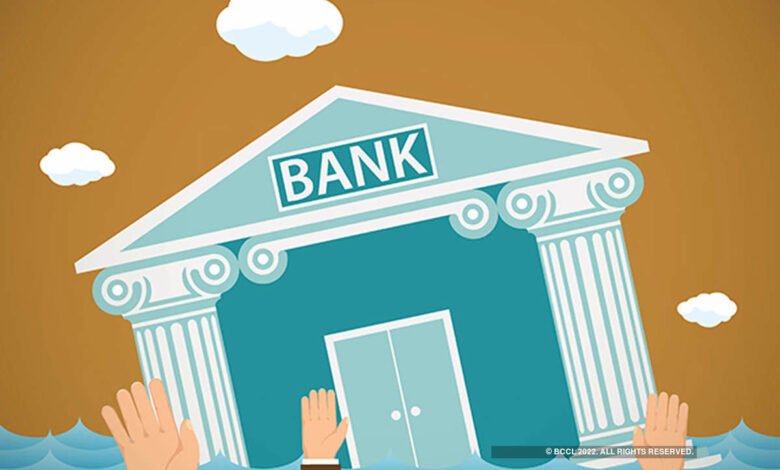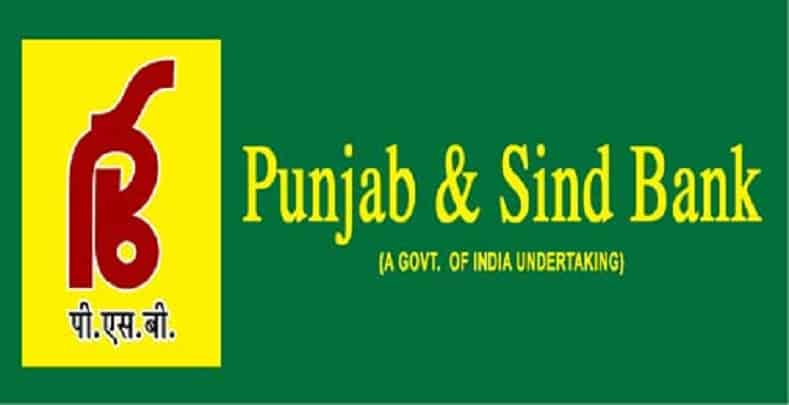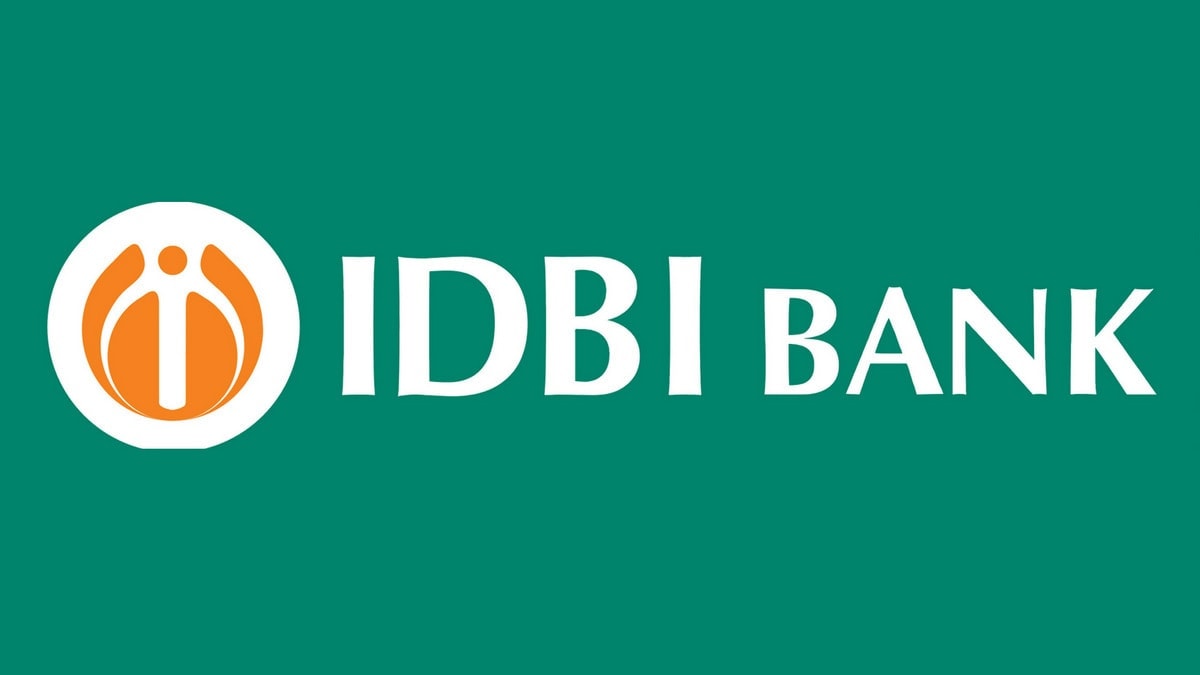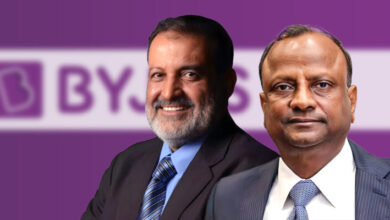Top 10 Worst Government Banks in the Indian Banking system

Top 10 Worst Government Banks in the Indian Banking system
It turned out that India dominated the Asia Pacific region’s worst banks, according to data sourced from the S&P Global Market Intelligence. The country has 10/15 of the area’s worst banks.
A problem facing customers is that the worst banks do not meet the customer’s needs. To protect their interests, the RBI takes the lead. To tackle the problem, the RBI hands over the ailing bank’s responsibilities to a stronger bank.
The economic repercussions of India’s Covid-19 lockdown were clear when the country entered it in March 2020. However, a less visible and more pressing crisis is the tremendous pressure on the banking industry, especially public sector banks. As a result, the economy was down 23.9% in the first quarter of fiscal 2021.
RBI published a January report warning that there would be a looming credit crisis, projecting a rise in the gross NPA ratio (NPA or bad loans) of Indian commercial banks from 7.5 % in September 2020 to 13.5% in September 2021. Furthermore, the central bank warned that this ratio could increase to 14.8% if the macroeconomic environment worsens.
(The NPA ratio is the percentage of bad loans compared to all loans issued and is a step in the health of the banking sector). In the face of this doubling of defaults, banks will face increased default provisions, which will reduce the capital available for new loans and make bankers warier of lending, thereby limiting credit available to businesses. It can improve credit costs, causing growth to be stifled.
From the steep decline in the first quarter of fiscal 2021, GDP growth has recovered sharply in recent months, rising to -7.5 % in the second quarter and 0.4 % in the third. During the second half of fiscal 2021, lifting the national lockdown, the pent-up demand from the months of shuttering, and the higher demand during the following festive season helped raise growth. However, the services sector, which contributes more than 55 per cent of India’s GDP, is to experience the same. For example, the hotel and travel industries continue to struggle.
The Government and the RBI adopted many measures last year to help alleviate the stress on businesses and consumers caused by the pandemic. It initiated long-term repo operations (loans provided to banks for one to three years at the repo rate staying at the time) last August. Under the Government’s Aatmanirbhar Bharat Abhiyaan, the Government announced a fiscal stimulus program to improve competition between domestic manufacturers. Small and stressed businesses could access government-backed loans through the ECLGS. Despite the necessity for these schemes, they also put tremendous pressure on the financial sector.
A looming credit crisis is not the only warning issued by the RBI. The ratings predict that the growth rate and the difficulty small businesses have will increasingly pinch banks in the future. Fitch believes that India’s informal economy and small businesses have to fully manifest on bank balance sheets due to the extreme shock to these sectors, high unemployment, and declining private consumption, the company wrote.
According to Jahangir Aziz, JP Morgan’s head of emerging markets research, the economy of India faces a risk of bank stress leaving millions of households and small businesses without access to credit. In addition, according to him, the Government, the central bank, and many analysts are underestimating the long-term effects that the contraction last year during the pandemic could have had on the Indian economy.
Indian banks have seen a lot of churn in the past few years. In June 2019, the RBI initiated a balance sheet cleaning exercise. This showed bad loans totalling Rs 9.4 lakh crore. The loans issued by public sector banks account for about 85 per cent of NPAs. Former finance secretary Subhash Chandra Garg says the Covid pandemic could cause more NPAs of up to Rs 10 lakh crore. Banks are alarmed by this doubling of bad loans. In addition, several states have recently reported a new wave of Covid-19 infections, which has exacerbated these concerns. Many fear that such an outbreak could spark another round of curfews and lockdowns, which will again slow economic activity.
1. Yes bank
Private Bank Yes Bank Ltd is facing a deteriorating economy as one of India’s major private banks. As a result, RBI had to take immediate measures to protect depositors’ money by implementing a reconstruction scheme.
In the post-liberalization era, Yes Bank was one of the private banks of the new generation that started operations. Ashok Kapur and Rana Kapoor founded the bank.
It provided loans to those unable to raise funds elsewhere, which posed a high risk for the bank. As a result, yes banks had grown until 2017 when NPAs existed.
In India, most banks have a problem with not repaying loans. This is called an NPA. For example, yes Bank’s Gross NPA at the end of September 2019 was 7.4%. The amount amounted to Rs 40,709.20 crore, or 18.87 per cent of the banks by the end of December.
YES Bank’s NPA caused a crisis when it became public.
In the same quarter in 2018, the bank reported a profit of Rs 1001 crore, and in the quarter ending December 2019, Yes Bank posted a loss of Rs 18,564 crore. If not for a tax write-back of Rs 6,214 crore, the bank’s net loss would have been bigger at Rs 24,778 crore. According to Yes Bank, the last quarter lost Rs 600 crore.
 2. Punjab and Sind Bank
2. Punjab and Sind Bank
Punjab and Sind Bank announced its status in August 2021. Against the bank, they reported a loss of Rs 3,557 crore.
It shows the difference between the face value and subscription price of shares by displaying the Share Premium Account.
By 2020, the company is expected to lose -28.54 % in total returns with a security premium of Rs 4835.11 crore.
Compared, the bank has a value of 8.7%, indicating poor bank health.

3. Indian Overseas Bank
According to former and current company managers, banking industry veterans, rating agencies, and critics familiar with the workings of IOB, these are some of the real reasons for the crisis at Indian Overseas Bank (IOB), which banking regulator Reserve Bank of India started to take “immediate corrective action” at the Chennai-based to curb bad loans, improve internal controls, and consolidate business moves.
While it took 74 years for IOB to reach an amount of 80,782 crores in 2010, it more than doubled in the next four years under M.Narendra’s leadership to 1.81 trillion.
“Narendra was like a kid in a candy store,” a senior banker who worked with him stated, referring to his penchant for doing things without thinking about the consequences— the bank’s profitability.
The former chairman and managing director made a mistake in acquiring “high-cost deposits” to fund the bank’s loan. A banker told anonymity.
The story did not include an interview with Narendra.
He announced in late 2010 that he expected the bank’s overall net income (deposits and loans) to reach *2.5 trillion by the end of the year. So adding 40,000 crores in four months would mean adding about 1% of its help.

4. Union Bank of India
The Union Bank of India has launched an emergency funding window for corporate and MSME customers who have been affected by Coronavirus (Covid-19) outbreaks. In a statement, the bank, as of 1st February 2020, will receive a maximum 10 per cent reduction in working capital.
These loans will have a repayment period of 36 months, including a 12-month moratorium. There is no deadline for repayment.
As per the Bank, the credit facility is shown at a NIL margin, an 8 per cent fixed interest, and a one-year MCLR as of 31st December 2015.
A loan of up to Rs 10 crore is available to MSME/agriculture borrowers and up to Rs 50 crore for others.
Some public sector banks offer credit to their customers to meet. These banks include the State Bank of India, Bank of Baroda, and Indian Bank.
Indian public sector banks include Union Bank. The Government is a listed entity, holding 83.5% of the capital.
It is ranked the country’s worst bank for the following reasons:
Throughout eight years, the Union Bank of India has accrued a total of Rs 26072 crore in bad loans, indicating that it is in poor recovery and ill-prepared. Despite this, the amount of money recovered confidential details.
Overall, the bank will have returned -23.39% in 2020. As a result, the bank’s net NPA stands at 8.6%, rather than the RBI’s suggested 6%.
Due to this, the Union Bank of India has ranked among the top 10 most dangerous banks in India.
5. IDBI Bank
Despite the state-owned lender’s fragile financial situation and the fact that LIC is in the process of purchasing a controlling interest, the Government has left IDBI Bank without a CEO.
B Sriram, who had resigned from the State Bank of India three months ago to take over at IDBI, retired on Sunday. No replacement has been placed, leading to speculation about his replacement.
In reality, when the Government finalized the long-awaited nominations for other state-run banks, some of which had been without a full-time leader for eight months, it had not selected a new IDBI Bank chief.
Sources in the bank claim that the employee union filed that caused the Government’s plan to fall through. The new owner had said that Sriram would be given an extension at IDBI Bank.
As a result, the bank will have to manage with a part-time head until it can resolve its NPAs and losses of Rs 2,400 crore.
LIC plans to acquire a 15% stake in IDBI Bank and a 50% stake in the as part of its acquisition plan. Government officials stated that they would raise the bank’s funds for expansion.
IDBI Bank has been a thorn in the Government’s side, with multiple attempts to turn it around failing. The bulk stake purchase by LIC is the latest attempt to keep the bank-turned-financial entity afloat.
The action has different sectors, but the Government has defended it as a win-win situation.

6. Central Bank of India
IL&FS Ltd, one of the key shareholders of the debt-ridden company, will not be participating in its proposed Rs 45 billion rights, sources at the bank said.
In March 2018, the CBI held a 7.67 per cent stake in IL&FS.
In addition to its NPA, the bank depends on government support for capital, sources said.
The Government injected Rs 3.23 billion into the bank last fiscal year to meet regulatory capital norms. Additional capital is expected this fiscal.
A 7.67 per cent stake in IL&FS would cost the Central Bank of India Rs 3.45 billion.
A severe liquidity crisis has hit the IL&FS group following defaults on interest payments on any debt repayments dating back to 27th August. As a result, the group owes over Rs 910 billion at the close level.
The Central Bank of India has also accepted its faults, having written off many loans to actual defaulters, totalling Rs17,239.34 crore. To make matters worse, the bank has only recovered 7% of the loan amount to the large defaulters over the last eight years.
According to RTI sources, the bank has recovered Rs 1922.69 crores from its defaulters.
In total, the returns between July and September were -20.14%. In addition to its ranking in the Top 7 worst performing banks in the Asia Pacific for 2020, the bank is in the list of banks in the Top 50 worst performing banks globally.
However, the bank’s credit-deposit ratio stands at 0.54 per cent, which raises doubts. An overstretched balance sheet is shown by a higher credit-deposit percentage. On the other hand, net NPA and NPA represent a bank’s poor health status and contribute 9.3%. This percentage is higher than the RBI’s 6%.
7. Punjab National bank
In its quarterly report for the quarter ended 30th June, Punjab National Bank (PNB) reported a loss of Rs 940 crore due to bad loans. It would have been more severe if not for the tax write-back of Rs 623 crore. The bank’s net profit in the year prior was Rs 343.40 crore.
A bad loan crisis haunted Punjab National Bank (PNB) in the quarter that ended 30th June at a Rs 940 crore loss. The loss would have been much worse if it were not for a tax write-off of Rs 623 crore. Net profit in the year-ago period was Rs 343.40 crore.
The bank lost Rs 13,417 crore in the quarter due to the LOU incident involving diamond tycoons Nirav Modi and Mehul Choksi, its highest quarterly loss ever. In addition, losses were exacerbated by the Rs 14,356 crore LOU scam.
As a result of the scam, provision for bad loans increased by 94.6% to Rs 4,982 crore in the June quarter. However, following a special dispensation from the Reserve Bank of India (RBI), the bank is spreading the provision for the scam over four quarters. In March 2018, the lender was allowed to make 25% of the provisions in the fourth quarter and to spread the following three quarters.
The bank made a provision amounting to Rs 6,178.42 crore in the March quarter, while another allowance of Rs 1,863.46 crore was made in June.
In the next two quarters, we will make the remaining provisions. The Bank’s Board also approved a stock option of Rs 10 crore for Directors. According to the end-of-June quarter financial statements, NPA had risen by 43% over the last quarter. Fresh slippages amounted to Rs 5,250 crore during the quarter.
As part of its recovery efforts, the lender recovered Rs 8,445 crore in the June quarter, with half of those coming from NCLT resolutions of Bhushan Steel Ltd. and Electrosteel Steel Ltd., which helped recover Rs 3,200 crore. During the quarter, the bank monetized 167 crores worth of help.
Corrective measures have been taken promptly by the bank. Besides setting up a large CP centre for handling large loans, the bank has segregated sourcing and processing loans. At a press conference, PNB’s managing director and chief executive officer, Sunil Mehta, said the bank had started asset management vertical to recover bad loans.
In the first half of the financial year, the bank aims to recover Rs 20,000 crore. In the year-ago period, the net interest margin was 2.56%. As a result, revenue from net interest increased by 21.7% to Rs 4,692 crore.
The bank also stopped 221 ATMs, eight branches, and 35 domestic and international locations as part of its cost-saving measures.
8. Jammu and Kashmir Bank
The armed revolution hard-hit Jammu & Kashmir’s banking sector erupted in the late 1980s. As a result, several big banks have shut down or scaled back operations, including the State Bank of India and Punjab National Bank.
One exception was the J&K Bank, which maintained banking in Kashmir for decades and was closely associated with the people’s economic independence aspirations. As if Kashmir had its RBI.
In today’s news, J&K Bank is being spotlighted for the wrong reasons due to allegations of corrupt practices, political collusion, and rare recruitment processes.
Jammu and Kashmir Bank had an expansion of bad loans up to Rs 884 crore by 31st March 2019, the Reserve Bank of India. However, according to sources, the bank recovered a sum of Rs 54 crore. The report was published in June 2019.
Jammu and Kashmir Bank have a total return of -17.82%, ranking it the 10th worst performing bank in India. The bank has also reported a net interest margin of around 0.00% in 2020. The bank uses this to determine the amount of interest it earns and the amount of interest it pays on deposits.
Further, the capital sufficiency ratio for the industry is expected to be around 11.1% by 2020. As a result, the bank has a reduced ability to take losses while keeping its capital untouched.

9. UCO Bank
According to UCO Bank, its net profit for the quarter ended March 2022 jumped by over threefold, to Rs 312,18 crore, as worst loans fell, lowering provisioning requirements. The net profit for the lender was Rs 80 crore a year ago.
In its filing with the Securities and Exchange Commission, UCO Bank reported a decline in total income in the fourth quarter of 2021-22 from Rs 4,637 crore a year ago. On the other hand, the bank’s net profit increased from Rs 167 crore in FY21 to Rs 930 crore in FY22.
They earned a total of Rs 18,082 crore during the year, an increase over Rs 17,870 crore made the last year. By the end of March 2022, the lender’s gross NPA had dropped to 7.89 per cent from 9.59 per cent at the end of March 2021.
Gross NPA decreased from Rs 11,352 crore to Rs 10,237 crore. In the same way, the net NPA decreased to 2.70 per cent (Rs 3,316 crore) from 3.94 per cent (Rs 4,390 crore).
Tax provisioning for Q4 FY22 than the background provisioning for Q4 FY22, which was Rs 982 crore. With the holding provisions (including technical write-offs), the Kolkata-based lender reported that it has fully complied with the requirements set by the Insolvency and Bankruptcy Code (IBC) the code.
It added that the bank in 9 accounts has a further provision of Rs 702,32 crore to resolve stressed help. UCO Bank ended the day at Rs 11.49 each, up by 3.98 per cent.
10. Bank of India
India’s state-owned bank is the Bank of India. Mumbai is the headquarters. In Asia-Pacific, it had a total return of -16.77%, making it the worst-performing bank. It ranked 15th. The Bank of India gained a sum of 189.39 crores in the last five years. This makes it India’s worst bank. NPA ratios show that bad debt provisions accounted for 72% of losses.

Edited by Prakriti Arora




